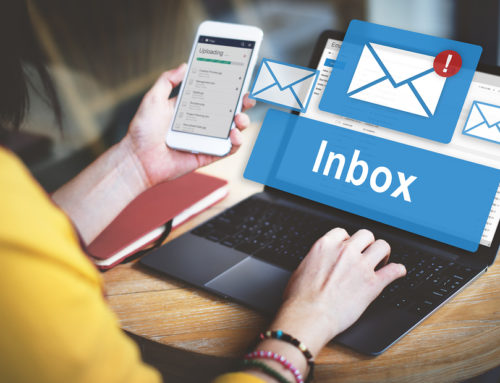
Kristina and I are about to make one of those big switches that all nonprofit communicators will likely make at some point in their careers: moving an email list to a new email service provider. That means we will need to warm up a new IP address and rebuild our sender reputation.
Shaky on the vocabulary? Email service providers (ESP) include companies like MailChimp, Constant Contact, ActiveCampaign, etc. Those companies use their own specific IP addresses to send email on your behalf (it’s like a return address). So, when you change the IP address you send from by moving your mailing list from one ESP to another, everyone wants to make sure you are legitimate and not a spammer. This includes the company you are now using to send, the inbox providers like Gmail, Yahoo, Outlook, etc., as well as all the different “spam monitor/blacklist” companies in between.
In our case, we are leaving Keap/Infusionsoft and moving to ActiveCampaign. We’ll share what we learn along this journey as we use the new tools, especially since many nonprofits use ActiveCampaign too. We also hope to take advantage of new features like dynamic content fairly quickly.
Only Take the Most Engaged with You When You Move Your Email List
One of the first tasks in this process is deciding which records to move and which to leave behind. We are moving only the most engaged records, about a third of our current database. We haven’t mailed to that full list in a very long time, so only moving the most engaged is a really nice bit of spring cleaning!
But next comes the part that is a little nerve-wracking: warming up our new IP address so our emails reach their destination. Anytime you start sending emails to thousands of email addresses with a new company, the various companies involved want to ensure you aren’t a spammer. The move from your old ESP to your new ESP means you are also moving from one sending IP address to another, so you have to rebuild your sender reputation on the new IP address.
The same holds for using a new domain name. Let’s say you’ve rebranded and changed your website domain and, therefore, your email addresses. You need to warm up that domain, too. Thankfully, we’ve been sending from NonprofitMarketingGuide.com for a long time, so we are good there.
How to Warm Up a New IP Address
Rather than sending to everyone on the list at your normal pace, you must warm up the new IP address. Here is some of the advice from ActiveCampaign that we are working through and how we are thinking about it.
1. Only Send to Engaged Contacts
We are currently scouring our list in several different ways to ensure we are only bringing over people who regularly open emails. At the same time, we also need to ensure we are bringing over people who have paid for services like our All-Access Pass even if they haven’t been opening emails. While we will still transfer those names over, we will tag them and treat them differently. More on that below . . .
2. Ease into Sending on the New IP Address
Inbox providers only want to accept so many emails per day from a new sender, so we really have to ease into it. ActiveCampaign has asked us by day of the week, week of the month, etc., what we typically send so they can help us create a plan for how many emails to send each day during our two-week warm-up period.
We are still awaiting their specific recommendations, but some plans encourage sending just 50 emails on the first day (one email to just 50 email addresses) and 100 on the second. From there, the number grows exponentially, so you can send thousands by the end of the week and tens of thousands by the end of the second week.
3. Create a Day-by-Day Plan for Your Nonprofit Email List
Since you can’t just send an email to everyone all at once, you’ll need a plan to ensure everyone does get your content eventually. Take a newsletter for example. You might need to send that content out over four or five days depending on the size of your list. So you’ll need to keep track of who got it each day of the week.
4. Make the Content Really Good
Because you are trying to build trust with all the companies involved, you want your subscribers to open, click, and otherwise interact with your emails by forwarding or replying. So this is a great time to be thoughtful about your email content. Spend a little more time on the subject line. Give them opportunities and reasons to click. Ask them to reply to a question.
5. Use Your Old ESP for the Less Engaged Parts of Your Nonprofit Email List
Depending on the size of your list, this may mean that you can’t send to everyone you normally do. Does that mean a big chunk of people won’t get your newsletter or other email? Not necessarily. You can still send from your old ESP while you are warming up with your new one.
For example, one part of our list will likely receive our weekly newsletter from ActiveCampaign later this month, while others will get it via Keap. The same goes for other one-off emails. Only the most engaged email addresses will initially receive those messages through ActiveCampaign.
So, if you see that you are getting messages from us via ActiveCampaing in mid-late April, thank you! That means you are one of our most active subscribers.
6. Watch Your Stats for Signs of Trouble While Warming Up Your New IP Address
It is totally normal for your nonprofit email metrics like open rates to be lower than expected during this warm-up process (even though we know open rates are problematic). It’s OK. But with each passing day and week, the numbers should be improving. If they are not, that’s a sign of potential trouble. You should talk to your account rep immediately to ensure that you aren’t permanently damaging your sender reputation and that it’s just a temporary warm-up problem.
We’ll share more from our experiences with this email list move soon.






